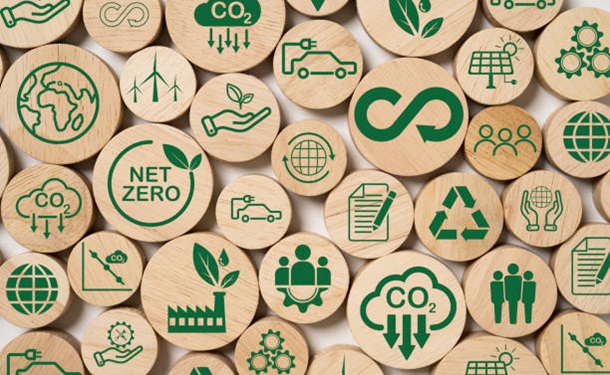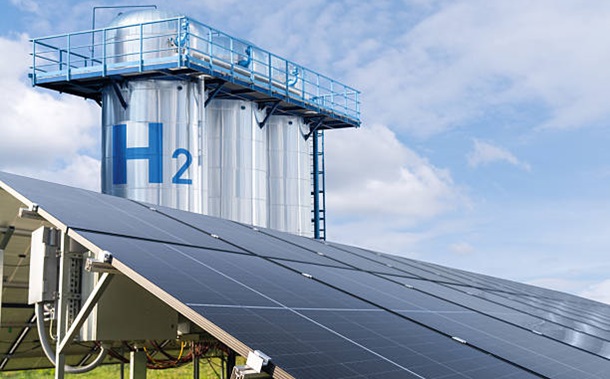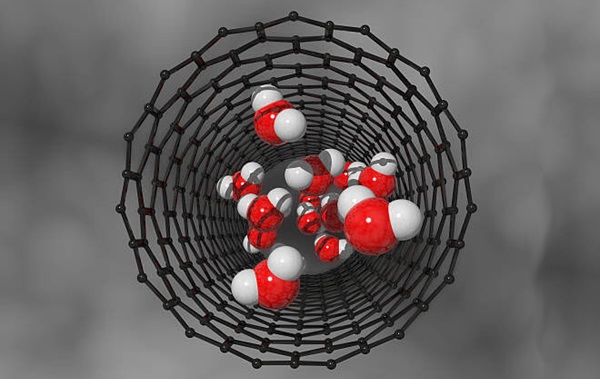Tribological Performance of Polymer Composite Modified with Calcined Eggshell Particles Post High-Temperature Exposure
Downloads
Doi:10.28991/ESJ-2024-08-04-03
Full Text:PDF
Downloads
Kisuka, F., Wu, C.-Y., & Hare, C. (2021). Friction-induced heat generation between two particles. EPJ Web of Conferences, 249, 05007. doi:10.1051/epjconf/202124905007.
Karuppiah, G., Kuttalam, K. C., Ayrilmis, N., Nagarajan, R., Devi, M. P. I., Palanisamy, S., & Santulli, C. (2022). Tribological Analysis of Jute/Coir Polyester Composites Filled with Eggshell Powder (ESP) or Nanoclay (NC) Using Grey Rational Method. Fibers, 10(7), 60. doi:10.3390/fib10070060.
Baena, J. C., & Peng, Z. (2017). Mechanical and tribological performance of UHMWPE influenced by temperature change. Polymer Testing, 62, 102–109. doi:10.1016/j.polymertesting.2017.06.017.
Qin, G., Na, J., Mu, W., Tan, W., Yang, J., & Ren, J. (2018). Effect of continuous high temperature exposure on the adhesive strength of epoxy adhesive, CFRP and adhesively bonded CFRP-aluminum alloy joints. Composites Part B: Engineering, 154, 43–55. doi:10.1016/j.compositesb.2018.07.059.
Belotti, L. P., Vadivel, H. S., & Emami, N. (2019). Tribological performance of hygrothermally aged UHMWPE hybrid composites. Tribology International, 138, 150–156. doi:10.1016/j.triboint.2019.05.034.
Tefera, G., Adali, S., & Bright, G. (2022). Mechanical behaviour of carbon fibre reinforced polymer composite material at different temperatures: Experimental and model assessment. Polymers and Polymer Composites, 30, 096739112211250. doi:10.1177/09673911221125072.
Bajracharya, R. M., Manalo, A. C., Karunasena, W., & Lau, K. T. (2014). Effect of elevated temperature on the tensile properties of recycled mixed plastic waste. Proceedings of the 23rd Australasian Conference on the Mechanics of Structures and Materials (ACMSM23). 9-12 December 2014, Byron Bay, Australia.
Li, X., Mou, Q., Ji, S., Li, X., Chen, Z., & Yuan, G. (2022). Effect of elevated temperature on physical and mechanical properties of engineered bamboo composites. Industrial Crops and Products, 189, 115847. doi:10.1016/j.indcrop.2022.115847.
Bellini, C., Di Cocco, V., Iacoviello, D., & Iacoviello, F. (2023). Temperature Influence on Brake Pad Friction Coefficient Modelisation. Materials, 17(1), 189. doi:10.3390/ma17010189.
Gehlen, G. S., Nogueira, A. P. G., Carlevaris, D., Barros, L. Y., Poletto, J. C., Lasch, G., Straffelini, G., Ferreira, N. F., & Neis, P. D. (2023). Tribological assessment of rice husk ash in eco-friendly brake friction materials. Wear, 516–517, 204613. doi:10.1016/j.wear.2022.204613.
Yavuz, H., Bayrakçeken, H., Çengelci, E., & Arslan, T. A. (2024). An investigation on the performance of vehicle brake pads developed from Cortaderia selloana based biomass. Biomass Conversion and Biorefinery, 1-10. doi:10.1007/s13399-023-05262-x.
Matějka, V., Fu, Z., Kukutschová, J., Qi, S., Jiang, S., Zhang, X., Yun, R., Vaculík, M., Heliová, M., & Lu, Y. (2013). Jute fibers and powderized hazelnut shells as natural fillers in non-asbestos organic non-metallic friction composites. Materials & Design, 51, 847–853. doi:10.1016/j.matdes.2013.04.079.
Singh, T., Pruncu, C. I., Gangil, B., Singh, V., & Fekete, G. (2020). Comparative performance assessment of pineapple and Kevlar fibers based friction composites. Journal of Materials Research and Technology, 9(2), 1491–1499. doi:10.1016/j.jmrt.2019.11.074.
Wu, S., Zhao, J., Guo, M., Zhuang, J., & Wu, Q. (2021). Effect of Fiber Shape on the Tribological, Mechanical, and Morphological Behaviors of Sisal Fiber-Reinforced Resin-Based Friction Materials: Helical, Undulated, and Straight Shapes. Materials, 14(18), 5410. doi:10.3390/ma14185410.
Jean-Fulcrand, A., Masen, M. A., Bremner, T., & Wong, J. S. S. (2019). Effect of temperature on tribological performance of polyetheretherketone-polybenzimidazole blend. Tribology International, 129(30), 5–15. doi:10.1016/j.triboint.2018.08.001.
Wang, X., Qin, Y., & Zhao, C. (2022). High-temperature behavior of silicone rubber composite with boron oxide/calcium silicate. E-Polymers, 22(1), 595–606. doi:10.1515/epoly-2022-0051.
Zhen, J., Han, Y., Wang, H., Jiang, Z., Wang, L., Huang, Y., Jia, Z., & Zhang, R. (2023). High Temperature Friction and Wear Behavior of PTFE/MoS2 Composites. Lubricants, 11(8), 312. doi:10.3390/lubricants11080312.
Dwiwedi, S. K., Srivastava, A. K., & Chopkar, M. K. (2019). Wear Study of Chicken Eggshell-Reinforced Al6061 Matrix Composites. Transactions of the Indian Institute of Metals, 72(1), 73–84. doi:10.1007/s12666-018-1463-0.
Vieira, K. P., Reichert, A. A., Cholant, G. M., Marin, D., Beatrice, C. A. G., & de Oliveira, A. D. (2023). Sustainable composites of eco-friendly polyethylene reinforced with eggshells and bio-calcium carbonate. Polimeros, 33(3), e20230026. doi:10.1590/0104-1428.20220108.
Panchal, M., Raghavendra, G., Reddy, A. R., Omprakash, M., & Ojha, S. (2021). Experimental investigation of mechanical and erosion behavior of eggshell nanoparticulate epoxy biocomposite. Polymers and Polymer Composites, 29(7), 897–908. doi:10.1177/0967391120943454.
Nandiyanto, A. B. D., Ragadhita, R., Fiandini, M., Al Husaeni, D. F., Al Husaeni, D. N., & Fadhillah, F. (2022). Domestic waste (eggshells and banana peels particles) as sustainable and renewable resources for improving resin-based brakepad performance: Bibliometric literature review, techno-economic analysis, dual-sized reinforcing experiments, to comparison with commercial product. Communications in Science and Technology, 7(1), 50–61. doi:10.21924/cst.7.1.2022.757.
Sunardi, S., Ariawan, D., Surojo, E., Prabowo, A. R., Akbar, H. I., Cao, B., & Carvalho, H. (2023). Assessment of eggshell-based material as a green-composite filler: Project milestones and future potential as an engineering material. Journal of the Mechanical Behavior of Materials, 32(1), 20220269. doi:10.1515/jmbm-2022-0269.
Sunardi, S., Ariawan, D., Surojo, E., Prabowo, A. R., Akbar, H. I., Sudrajad, A., & Seputro, H. (2023). Optimization of eggshell particles to produce eco-friendly green fillers with bamboo reinforcement in organic friction materials. Reviews on Advanced Materials Science, 62(1), 20230111. doi:10.1515/rams-2023-0111.
Hassan, S. B., Aigbodion, V. S., & Patrick, S. N. (2012). Development of polyester/eggshell particulate composites. Tribology in Industry, 34(4), 217–225.
Kowshik, S., Sharma, S., Rao, S., Shettar, M., & Hiremath, P. (2023). Mechanical Properties of Post-Cured Eggshell-Filled Glass-Fibre-Reinforced Polymer Composites. Journal of Composites Science, 7(2), 49. doi:10.3390/jcs7020049.
Manalo, A. C., Wani, E., Zukarnain, N. A., Karunasena, W., & Lau, K. T. (2015). Effects of alkali treatment and elevated temperature on the mechanical properties of bamboo fibre-polyester composites. Composites Part B: Engineering, 80, 73–83. doi:10.1016/j.compositesb.2015.05.033.
Sugiman, S., Setyawan, P. D., & Anshari, B. (2019). Effects of alkali treatment of bamboo fibre under various conditions on the tensile and flexural properties of bamboo fibre/polystyrene-modified unsaturated polyester composites. Journal of Engineering Science and Technology, 14(1), 27–47.
Wang, Q., Zhang, Y., Liang, W., Wang, J., & Chen, Y. (2020). Effect of silane treatment on mechanical properties and thermal behavior of bamboo fibers reinforced polypropylene composites. Journal of Engineered Fibers and Fabrics, 15. doi:10.1177/1558925020958195.
Ahmadijokani, F., Shojaei, A., Arjmand, M., Alaei, Y., & Yan, N. (2019). Effect of short carbon fiber on thermal, mechanical and tribological behavior of phenolic-based brake friction materials. Composites Part B: Engineering, 168, 98–105. doi:10.1016/j.compositesb.2018.12.038.
Palmiyanto, M. H., Surojo, E., Ariawan, D., & Imaduddin, F. (2021). Waste glass powder as a sustainable abrasive material for composite brake block. Tribology in Industry, 43(3), 363–372. doi:10.24874/ti.1061.02.21.06.
B Rajan, B. S., Balaji, M. S., & Noorani, A. M. A. (2019). Tribological performance of graphene/graphite filled phenolic composites - A comparative study. Composites Communications, 15(7), 34–39. doi:10.1016/j.coco.2019.05.012.
Mohd Pu'ad, N. A. S., Alipal, J., Abdullah, H. Z., Idris, M. I., & Lee, T. C. (2021). Synthesis of eggshell derived hydroxyapatite via chemical precipitation and calcination method. Materials Today: Proceedings, 42, 172–177. doi:10.1016/j.matpr.2020.11.276.
Bobrowski, A., & Grabowska, B. (2015). Ftir Method in Studies of the Resol Type Phenol Resin Structure in the Air Atmosphere in Some Time Intervals. Metallurgy and Foundry Engineering, 41(3), 107. doi:10.7494/mafe.2015.41.3.107.
Zhou, F., Cheng, G., & Jiang, B. (2014). Effect of silane treatment on microstructure of sisal fibers. Applied Surface Science, 292, 806–812. doi:10.1016/j.apsusc.2013.12.054.
Lin, J., Yang, Z., Hu, X., Hong, G., Zhang, S., & Song, W. (2018). The effect of alkali treatment on properties of dopamine modification of bamboo fiber/polylactic acid composites. Polymers, 10(4), 403. doi:10.3390/polym10040403.
Lim, K. Y., Yasim-Anuar, T. A. T., Sharip, N. S., Ujang, F. A., Husin, H., Ariffin, H., Md Tahir, P., Li, X., Lee, S. H., & Yusof, M. T. (2023). Green Phenolic Resins from Oil Palm Empty Fruit Bunch (EFB) Phenolated Lignin and Bio-Oil as Phenol Substitutes for Bonding Plywood. Polymers, 15(5), 1258. doi:10.3390/polym15051258.
Najah, M. I., Razak, A., Nekmat, N. A. C. S., Adzila, S., & Othman, R. (2020). Characterization of Calcium Carbonate Extracted from Eggshell Waste at Various Calcination Temperature. International Journal of Emerging Trends in Engineering Research, 8(10), 6725–6731. doi:10.30534/ijeter/2020/16810202.
Seo, H., Park, J., Kim, Y. C., Lee, J. J., & Jang, H. (2021). Effect of disc materials on brake emission during moderate-temperature braking. Tribology International, 163. doi:10.1016/j.triboint.2021.107185.
Ma, J., Qi, X., Zhao, Y., Zhang, Q., & Yang, Y. (2017). Effects of elevated temperature on tribological behavior of polyimide and polyimide/mesoporous silica nanocomposite in dry sliding against GCr15 steel. Wear, 374–375, 142–151. doi:10.1016/j.wear.2017.01.099.
Meresse, D., Watremez, M., Siroux, M., Dubar, L., & Harmand, S. (2013). Friction and wear mechanisms of phenolic-based materials on high speed tribometer. Journal of Tribology, 135(3), 031601. doi:10.1115/1.4023803.
Pan, L., Han, J., Yang, Z., Wang, J., Li, X., Li, Z., & Li, W. (2017). Temperature Effects on the Friction and Wear Behaviors of SiCp/A356 Composite against Semimetallic Materials. Advances in Materials Science and Engineering, 1824080. doi:10.1155/2017/1824080.
Zhang, T., Qiao, X., Tan, F., Wang, W., Lu, H., Xiao, Z., & Chen, J. (2017). Preparation of polyimide-graphite composite and evaluation of its friction behavior at elevated temperatures. Science and Engineering of Composite Materials, 24(1), 81–86. doi:10.1515/secm-2014-0322.
Vikram, K., Bhaumik, S., & Pramanik, S. (2023). Effect of graphite on tribological and mechanical properties of PA6/5GF composites. Journal of Thermal Analysis and Calorimetry, 148(9), 3341–3355. doi:10.1007/s10973-022-11939-8.
Zhang, E., Gao, F., Fu, R., Lu, Y., Han, X., & Su, L. (2021). Tribological behavior of phenolic resin-based friction composites filled with graphite. Materials, 14(4), 742. doi:10.3390/ma14040742.
Roshchin, M. N. (2020). High-temperature tribological tests of composite materials. IOP Conference Series: Materials Science and Engineering, 862(2), 022008. doi:10.1088/1757-899X/862/2/022008.
Yang, Y., Cao, J., Wu, P., Luo, T., Liang, T., Yin, H., & Yuan, K. (2024). Effect of temperature on interface debonding behavior of graphene/graphene-oxide on cement-based composites. Surfaces and Interfaces, 47. doi:10.1016/j.surfin.2024.104198.
Dai, Z., Zhang, B., Shi, F., Li, M., Zhang, Z., & Gu, Y. (2011). Effect of heat treatment on carbon fiber surface properties and fibers/epoxy interfacial adhesion. Applied Surface Science, 257(20), 8457–8461. doi:10.1016/j.apsusc.2011.04.129.
Souza, P. S., Santos, A. J., Cotrim, M. A. P., Abrí£o, A. M., & Cí¢mara, M. A. (2020). Analysis of the surface energy interactions in the tribological behavior of ALCrN and TIAlN coatings. Tribology International, 146(6), 106206. doi:10.1016/j.triboint.2020.106206.
Tang, X., Tong, J., Wang, L., Hu, W., Liu, D., Yu, C., Yuan, S., Ma, Y., & Zhuang, J. (2023). Study on the mechanism of expanded graphite to improve the fading resistance of the non-asbestos organic composite braking materials. Tribology International, 180. doi:10.1016/j.triboint.2023.108278.
Karacor, B., & Özcanli, M. (2022). Post curing temperature effect on mechanical characterization of jute/basalt fiber reinforced hybrid composites. International Advanced Researches and Engineering Journal, 6(2), 90–99. doi:10.35860/iarej.1089568.
Campana, C., Leger, R., Sonnier, R., Ferry, L., & Ienny, P. (2018). Effect of post curing temperature on mechanical properties of a flax fiber reinforced epoxy composite. Composites Part A: Applied Science and Manufacturing, 107, 171–179. doi:10.1016/j.compositesa.2017.12.029.
Morimoto, T., Suzuki, T., & Iizuka, H. (2015). Wear rate and fracture toughness of porous particle-filled phenol composites. Composites Part B: Engineering, 77, 19–26. doi:10.1016/j.compositesb.2015.03.007.
Sakuri, S., Surojo, E., Ariawan, D., & Prabowo, A. R. (2020). Experimental investigation on mechanical characteristics of composite reinforced cantala fiber (CF) subjected to microcrystalline cellulose and fumigation treatments. Composites Communications, 21, 100419. doi:10.1016/j.coco.2020.100419.
Akbar, H. I., Surojo, E., Ariawan, D., & Prabowo, A. R. (2020). Technical investigation of sea sand reinforcement for novel al6061- sea sand composites: Identification of performance and mechanical properties. Periodico Tche Quimica, 17(36), 47–57. doi:10.52571/ptq.v17.n36.2020.63_periodico36_pgs_47_57.pdf.
Ariawan, D., Rivai, T. S., Surojo, E., Hidayatulloh, S., Akbar, H. I., & Prabowo, A. R. (2020). Effect of alkali treatment of Salacca Zalacca fiber (SZF) on mechanical properties of HDPE composite reinforced with SZF. Alexandria Engineering Journal, 59(5), 3981–3989. doi:10.1016/j.aej.2020.07.005.
Agumba, D. O., Park, G., Woong Kim, J., & Kim, J. (2024). Biobased natural fiber-reinforced composites derived from lignin-based resin and mercerized jute fibers. Materials Letters, 360, 136055. doi:10.1016/j.matlet.2024.136055.
Akbar, H. I., Surojo, E., Ariawan, D., Prabowo, A. R., & Imanullah, F. (2021). Fabrication of AA6061-sea sand composite and analysis of its properties. Heliyon, 7(8). doi:10.1016/j.heliyon.2021.e07770.
Sakuri, S., Surojo, E., Ariawan, D., & Prabowo, A. R. (2020). Investigation of Agave cantala-based composite fibers as prosthetic socket materials accounting for a variety of alkali and microcrystalline cellulose treatments. Theoretical and Applied Mechanics Letters, 10(6), 405–411. doi:10.1016/j.taml.2020.01.052.
Ariawan, D., Surojo, E., Triyono, J., Purbayanto, I. F., Pamungkas, A. F., & Prabowo, A. R. (2020). Micromechanical analysis on tensile properties prediction of discontinuous randomized zalacca fibre/high-density polyethylene composites under critical fibre length. Theoretical and Applied Mechanics Letters, 10(1), 57–65. doi:10.1016/j.taml.2020.01.009.
Akbar, H. I., Surojo, E., Ariawan, D., & Prabowo, A. R. (2020). Experimental study of quenching agents on Al6061–Al2O3 composite: Effects of quenching treatment to microstructure and hardness characteristics. Results in Engineering, 6, 100105. doi:10.1016/j.rineng.2020.100105.
Laraba, S. R., Rezzoug, A., Halimi, R., Wei, L., yang, Y., Abdi, S., Li, Y., & Jie, W. (2022). Development of sandwich using low-cost natural fibers: Alfa-Epoxy composite core and jute/metallic mesh-Epoxy hybrid skin composite. Industrial Crops and Products, 184, 115093. doi:10.1016/j.indcrop.2022.115093.
Fanani, E. W. A., Surojo, E., Prabowo, A. R., & Akbar, H. I. (2021). Recent progress in hybrid aluminum composite: Manufacturing and application. Metals, 11(12), 1919. doi:10.3390/met11121919.
dua, S., Khatri, H., Naveen, J., Jawaid, M., Jayakrishna, K., Norrrahim, M. N. F., & Rashedi, A. (2023). Potential of natural fiber based polymeric composites for cleaner automotive component production -a comprehensive review. Journal of Materials Research and Technology, 25, 1086–1104. doi:10.1016/j.jmrt.2023.06.019.
Fanani, E. W. A., Surojo, E., Prabowo, A. R., Ariawan, D., & Akbar, H. I. (2021). Recent development in aluminum matrix composite forging: Effect on the mechanical and physical properties. Procedia Structural Integrity, 33, 3–10. doi:10.1016/j.prostr.2021.10.002.
Graziano, A., Garcia, C., Jaffer, S., Tjong, J., Yang, W., & Sain, M. (2020). Functionally tuned nanolayered graphene as reinforcement of polyethylene nanocomposites for lightweight transportation industry. Carbon, 169, 99–110. doi:10.1016/j.carbon.2020.07.040.
Hua, Z., Tang, L., Li, L., Wu, M., & Fu, J. (2023). Environmental biotechnology and the involving biological process using graphene-based biocompatible material. Chemosphere, 339, 139771. doi:10.1016/j.chemosphere.2023.139771.
Dhiwar, D., Kumar Verma, S., Gupta, N., & Agnihotri, P. K. (2024). Augmenting the fracture toughness and structural health monitoring capabilities in Kevlar/epoxy composites using carbon nanotubes. Engineering Fracture Mechanics, 297, 109877. doi:10.1016/j.engfracmech.2024.109877.
Smaradhana, D. F., Prabowo, A. R., & Ganda, A. N. F. (2021). Exploring the potential of graphene materials in marine and shipping industries – A technical review for prospective application on ship operation and material-structure aspects. Journal of Ocean Engineering and Science, 6(3), 299–316. doi:10.1016/j.joes.2021.02.004.
Naufal, A. M., Prabowo, A. R., Muttaqie, T., Hidayat, A., Purwono, J., Adiputra, R., Akbar, H. I., & Smaradhana, D. F. (2024). Characterization of sandwich materials – Nomex-Aramid carbon fiber performances under mechanical loadings: Nonlinear FE and convergence studies. Reviews on Advanced Materials Science, 63(1), 20230177. doi:10.1515/rams-2023-0177.
- This work (including HTML and PDF Files) is licensed under a Creative Commons Attribution 4.0 International License.



















